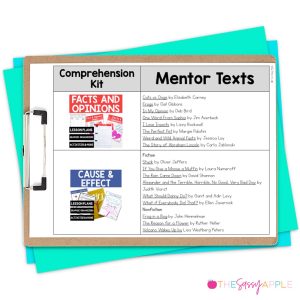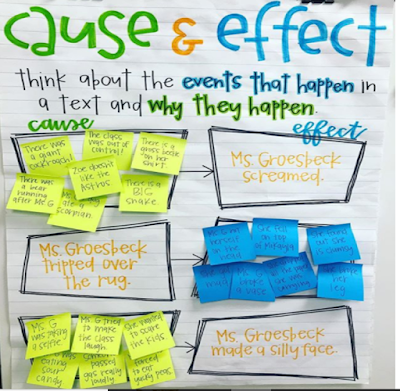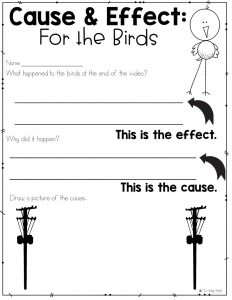Are you looking for some engaging ideas to help your students understand cause and effect? If so, you’re in the right place! This blog post is full of activities, mentor texts, and other resources to promote understanding of how one event leads to another. These strategies will help your young learners make meaningful connections between different concepts while developing their critical thinking skills. So get ready for a lively exploration that’s sure to excite both you and your students — let’s dive into teaching cause and effect!
Introduce Cause and Effect
One way to engage students right off the bat is to let students answer questions about you! I always find that 2nd graders enjoy any opportunity to learn more about you and make guesses about your life (or really anything to do with you) I mean, have you ever asked a class of students to guess how old you are? #instantengagement You will get a TON of responses anywhere from 15-75. And that’s what we want! Participation=Engagement
Which is why I love all things Amy Groesbeck. Not only are her anchor charts to die for, she is personable and isn’t afraid to be silly with her students. The anchor chart below does everything right: explains the concept, creates a visual, and includes student input (in a fun way).
She has incredible Reading Comprehension Skills and Strategies anchor charts here.
Cause and Effect Free Worksheet
Another fantastic attention-getter is using a short video. Pixar shorts are the perfect length for getting the point across in an efficient fashion! For the Birds is a perfect discussion starter actions and outcomes. Here’s a freebie you can use along with the video:
Now it’s time to apply that learning to text. I have three book suggestions that vary in level. I have paired each one with a different graphic organizer for easy differentiation.
Books for Teaching Cause and Effect
The first one is ADORABLE and funny! This first book is by Oliver Jeffers. He wrote The Day the Crayons Quit. #fanfavorite It’s called Stuck and I was for real laughing out loud when I first read it.

This book makes for a great lesson for younger learners (1st-2nd) because it is simple, easy to understand, and includes a long chain of events. I paired it with an equally simple graphic organizer where students identified one cause and one effect. I love the visual of this organizer as it’s a real-world example of cause/effect making it easy for students to remember the concept.
Next is a crowd-favorite Alexander and the Terrible, Horrible, No Good, Very Bad Day by Judith Viorst. I love how it includes so many relatable circumstances for young readers. It is easy to understand and draw many examples of cause and effect. Incorporating vocabulary like these cause and effect signal words will support students in their writing and ability to identify cause and effect language within texts.

Finally, the last book I am sharing is Jumanji by Chris Van Allsburg. Many are familiar with the movie (and now the newer movie which I have not seen). The book has many similarities and differences so it would be great for comparing/contrasting as well. Since it is pretty lengthy for a read-aloud, I would break it down into a few lessons. I would recommend it for late 2nd-4th grade.

It’s so important for our students to engage with academic vocabulary so they can recognize the skill in context and include signal words in their writing.
My MOST favorite thing about Comprehension Kits is that they can be paired with any text! I supplement the district’s ELA curriculum reading with so many wonderful picture books. There’s nothing I love more than finding a book that aligns well with teaching one of the comprehension skills. I’ve curated a list of my favorite mentor texts for teaching each skill!
Cause and Effect Book List

Grab this FREE list of mentor texts to use for each reading comprehension skill. It also includes a scope and sequence to help you plan! —> FREE Mentor Text List
If you are looking for additional resources for teaching cause & effect, click here or on the picture below for more graphic organizers, anchor charts, and lesson plans.
Happy teaching!
If you would like to read more blog posts like this one, click here.





